And just like that, the first of three Clasicos is already behind us. As fate would have it, it ended in a draw, a mostly fair result considering the events that transpired in the Catalan fortress of the Camp Nou.
We saw only one goal on each side which left most wanting a bit more. Battles between Barcelona and Real Madrid are like pizzas: even when they are bad, they are actually still pretty good. This was maybe not the most thrilling encounter of Spain’s finest but it was definitely one that should be examined more closely.
This tactical analysis will use statistics to explain how both sides managed to rattle the net but still leave the pitch with that sweet taste of victory out of reach. At least for now, that is.
Lineups
Barcelona (4-3-3)
Starting XI: Ter Stegen – Semedo, Pique, Lenglet, Alba – Rakitić, Busquets, Arthur – Malcom, Suarez, Coutinho
Bench: Iñaki Peña, Murillo, Vidal, Aleñá, Sergi, Boateng, Messi
Coach: Ernesto Valverde
Real Madrid (4-3-3)
Starting XI: Navas – Carvajal, Varane, Ramos, Marcelo – Modrić, Llorente, Kroos – Lucas, Benzema, Vinicius
Bench: Courtois, Nacho, Bale, Casemiro, Asensio, Isco, Ceballos
Coach: Santiago Solari
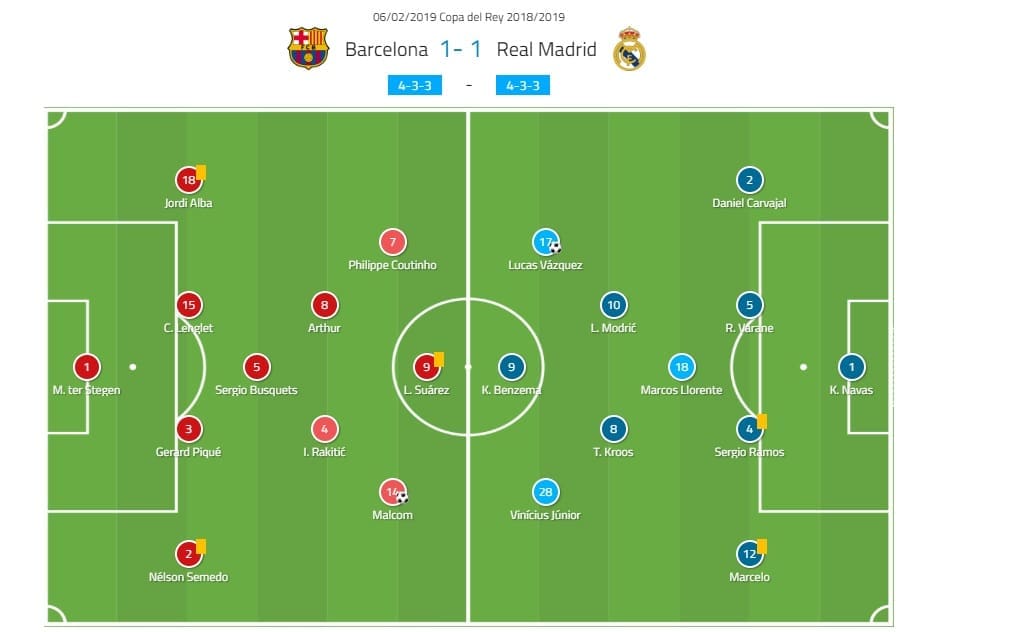

Barcelona’s setup
Ernesto Valverde made a couple of crucial changes that ended up being excellent for his team. Even though Sergi Roberto has been his first choice right-back on almost all other occasions, Valverde decided to go with Nelson Semedo for the big semi-final tie against Real Madrid.
Other than that, there was also one huge omission from the team, and that was Lionel Messi. The Argentine has reportedly fully recovered from a knock he received against Valencia in La Liga but it seems that the coaching staff, and the player himself, did not want to risk anything. In his place came Malcom, the young Brazilian winger who hasn’t had much (or any) game time until now.
The rest of the team was as expected with the exception of the goalkeeper. With Barcelona’s first-choice Copa del Rey keeper Jasper Cillessen injured, Marc-Andre ter Stegen was the man between the sticks. With Ousmane Dembele also still sidelined with an injury, Philippe Coutinho was the left-wing choice.
The team operated in a 4-3-3 system in most phases of the game but changed slightly as some big pieces of the puzzle were shifted throughout the match.
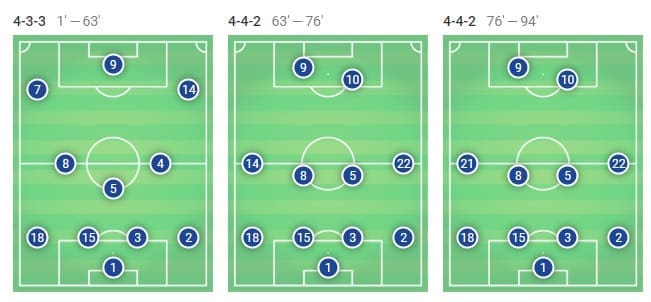
Real Madrid’s setup
In the opposition’s camp, there was a much calmer atmosphere even though Santiago Solari was heading into his first ever El Clasico as a coach. The reason for his calmness was the fact that he finally had all of his players fully fit and ready to prove the doubters wrong.
After a long spell of injuries to the majority of their team, Real Madrid’s patience was rewarded with the possibility of fielding their first-choice XI, and it couldn’t have arrived at a better time than this. Solari still had a couple of headaches to resolve, but in the end he got most of them spot on.
Keylor Navas was chosen instead of the newcomer Thibaut Courtois, and Marcelo got the nod in front of the young Sergio Reguilon. In the centre of the park, Marcos Llorente benched Casemiro with the task of man-marking a certain Argentine wizard, who ended up starting on the bench, somewhat ruining that plan.
The coach was not the only debutant in the Clasico for Los Blancos, though. Vinicius Jr., their young prodigy, got the chance in the starting XI in front of the fully fit Gareth Bale as the team operated in a 4-3-3 system.
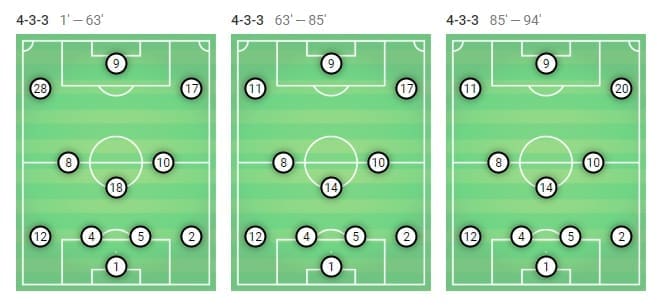
A point to prove
These kind of games are often the most misleading when it comes previews and trying to guess the final outcome. The last time Barcelona and Real Madrid met was also at the Camp Nou, and that game ended with five goals in the visitors’ net. Although it might not have been such a one-sided affair as the result might suggest, the better of the two was more than just glaringly obvious.
If we fast forward a bit, we get that same team on top of the La Liga table, and the other, down in third place, and struggling for the majority of the season. Still, “form doesn’t matter in Clasicos” is one of the sayings that circulates in Spain. To a certain degree that is true, because usually both teams play better against each other than in other ordinary games.
For that reason, anything could happen in Catalunya, and the resurgence of Real Madrid did not really surprise that many people. It did surprise Barcelona though, if we are being completely honest.
Santiago Solari is slowly getting the hang of coaching Real Madrid as the rise in form is showcasing already. But maybe the biggest proof of that lies in the tactics he deployed against Barcelona, and more importantly, specifically for Barcelona.
Nowadays, it is common knowledge that Barcelona start everything all the way back from the goalkeeper. However,even though both Marc-Andre ter Stegen and Jasper Cillessen are world-class goalies, there’s a big difference in their respective approaches.
The German is exceptional with his feet. When he is in between the sticks, he will try to find his teammates with long and precise passes that almost always find their mark. What he sometimes does in those situations is position himself just next to one of his posts to create a better passing line for his teammates. Then, when he spots free space, he proceeds to go long and find it with almost pinpoint accuracy, as can be seen below.
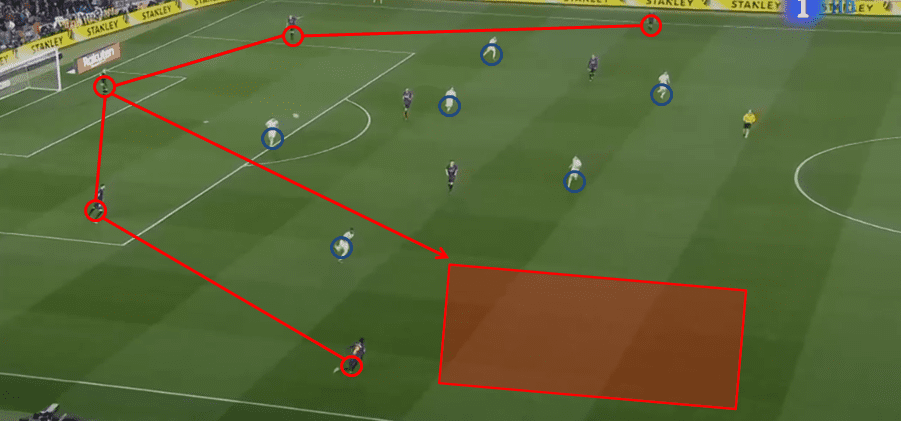
That is the hosts’ usual approach, or rather what they prefer to do, but Real knew how to deal with it. Pressing Barcelona in those situations does work, as we have seen multiple teams exploit it, but the Catalans are used to it by now. Usually, if they don’t have to clear the ball, they weasel their way out of it with a steady build-up from the back-line onward. Solari was not only expecting it but was even counting on it.
Notice in the image below how instead of pressing all the way to the goalkeeper, the players in white just make sure to man-mark the Blaugrana exceptionally well. This allows ter Stegen some freedom and time on the ball but gives him no viable options to pass to.

As a result, the German does get his long ball but fails to find a target that is not marked which eventually leads to another lost ball in midfield. This was, coincidently, the other focal point of this game. Just like the aforementioned aspect, it all also went in favour of Real Madrid.
For all their efforts, Barcelona failed to properly set foot into the opposition’s half until after the half-hour mark. Real’s dominance in all proceedings in the early stages was clearly visible.
Probably the best possible proof is in the possession statistics themselves. In the opening stages of the match, Barcelona even yielded the possession battle to Real, which is something not often seen as the Catalans usually always dominate that aspect of the game pretty handily no matter who is on the other side of the pitch.
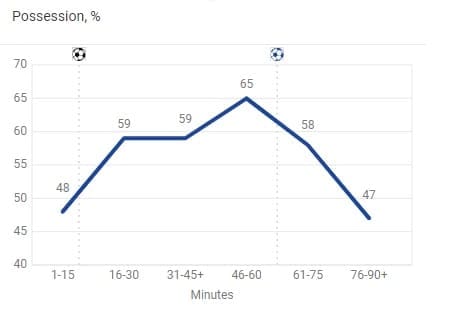
The battle for midfield
The midfield is usually the place where games are either won or lost for teams like Barcelona or Real Madrid. For the former, the emphasis has always been there since the beginning of their history. For the latter, it’s the place where their most influential players play and is, therefore, a point of interest from which most chances arise.
Even before the game, we knew that who prevailed in that area would more than likely get an advantage in the game. For a large extent of the game, the Galacticos had control over the midfield area, mostly due to Barcelona’s unusually high number of mistakes and misplaced passes.
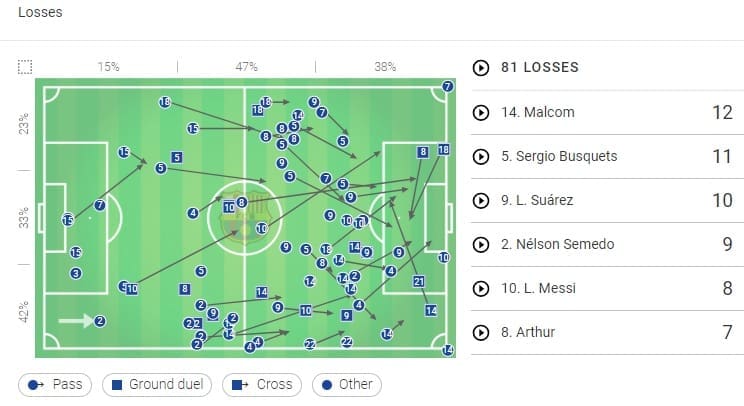
It is true that Real had even more possession losses than Barcelona (94 – 82). But while their losses were mostly harmless, as shown by only one counter-attack initiated by the Catalans (which did not end with a shot on target), the hosts were lucky to escape with just one conceded goal in the whole game.
The Whites made a total of 53 interceptions which finally resulted in nine counter-attacks, four of which lead to a shot on target. This means that roughly 44% of all their counters were lethal for the opposition. Unfortunately for them, they were missing the end product to seal the deal.
One piece of the Blaugrana midfield was still shining brightly even though the rest of the squad did not follow in unison. It was the young Arthur Melo who was making quite a statement against Luka Modrić, the best player in the world, on the other side.
Solari was also quick to notice how the Brazilian is clearly an important aspect for Barcelona, so he set Modrić on a solo mission to stop Melo. Wherever he went, Modrić followed and marked him by any means necessary.
That resulted in Arthur being fouled a total of five times throughout the game. This still couldn’t throw him off his game though, as he recorded 95% passing accuracy (74 total passes), five interceptions, 52% duels won and 75% completed actions.
Once again, he was instrumental in getting rid of the opposition’s press by inviting it and then creating free space for his teammates to exploit via great movement.
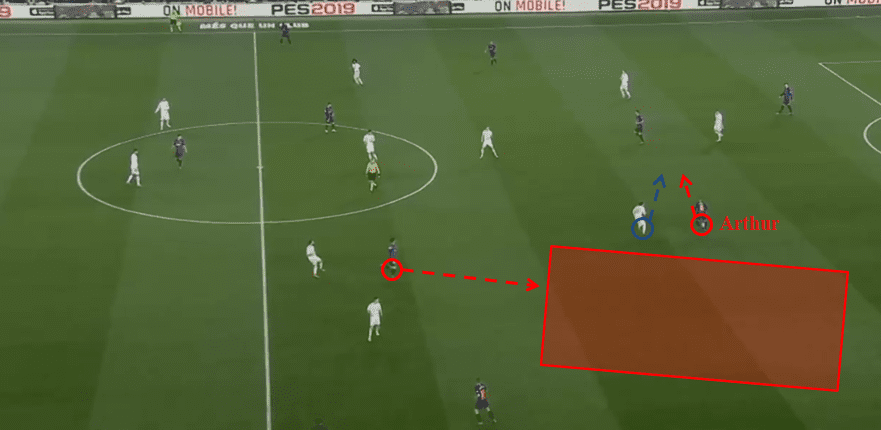
Notice how Arthur moves Modrić with him, creating a big pocket of free space for Carles Alena, who notices it immediately and drops slightly deeper down the pitch to receive the ball, free of any markers.
Once he has created that space, Arthur makes a quick turn and sends the ball to the young La Masia graduate who then swiftly starts the attack. The most important thing, however, is the delusion his movement created.
Real’s pressing squad all pinned Busquets down, thinking that Melo would pass to him. Instead, he changes direction in a second and decides to play the ball to Alena, having scouted his position only seconds prior to that.
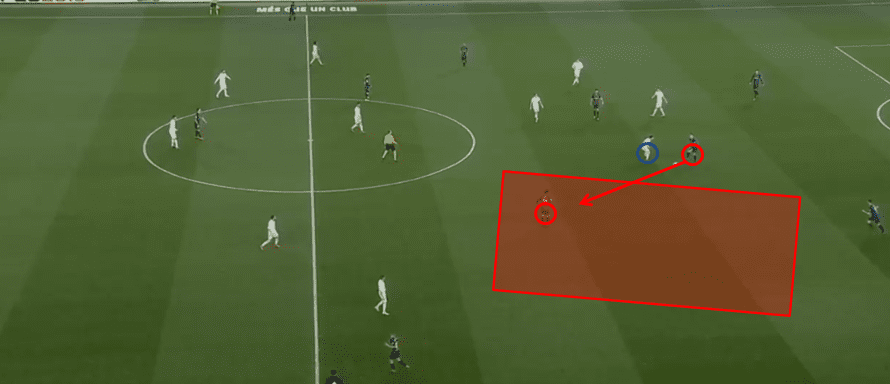
The Brazilian was mostly the key to turning the tide. By evening the odds in midfield, he helped earn his side a draw.
Two teams, one plan
Even though the midfield was crucial in asserting and then maintaining dominance, both teams had a different approach in attack. The middle of the park was the area to conquer, but when it came to actually inflicting damage and creating goal-scoring chances, both teams opted to advance down the wings.
Interestingly enough, they chose to attack on opposite sides. Barcelona preferred the right wing, almost completely ignoring the left, and Real advanced down the left flank, leaving the right a bit sleepy.

While it is not a surprise that Real Madrid used their left side to the fullest, considering that both Marcelo and Vinicius Jr. play on that side, it was quite a surprise that Barcelona opted for the right flank since they usually attack down the left.
With the away team, the combination was quite the familiar one and the pieces to move it were also not surprising. Most of it would usually start with the Croat Luka Modrić, who was crucial in setting everything in motion.
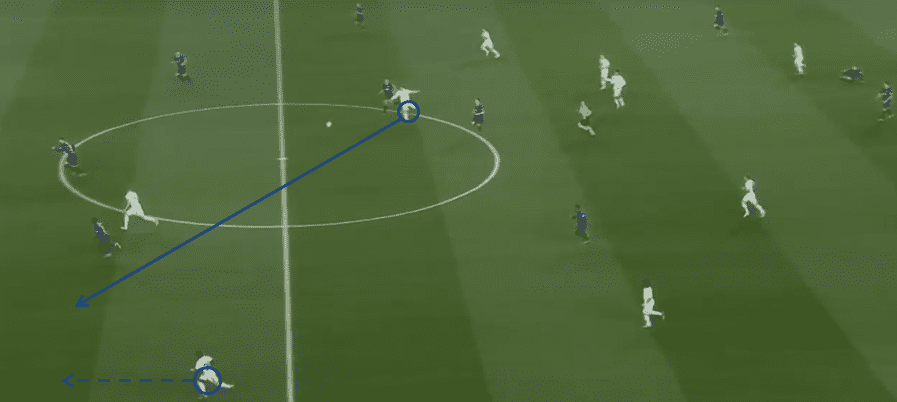
In the example above, Real move quickly after a good interception. Modrić controls it beautifully and plays an excellent pass, exploiting Vinicius’ pace and one-on-one capabilities to breach Barcelona’s defence.
A similar thing happened on multiple other occasions. Whether it was Modrić, Marcelo or someone else, Madrid would often try to get behind the defence with balls over the top.
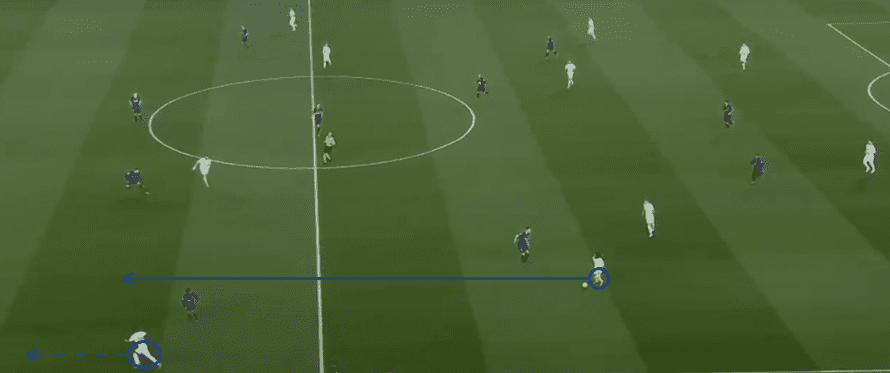
Barcelona attacked in a similar manner but used their full-backs more. Malcom was the new name on Valverde’s team sheet but ended up being probably the most important change, along with Nelson Semedo. The duo performed wonderfully, both individually and as a tandem.
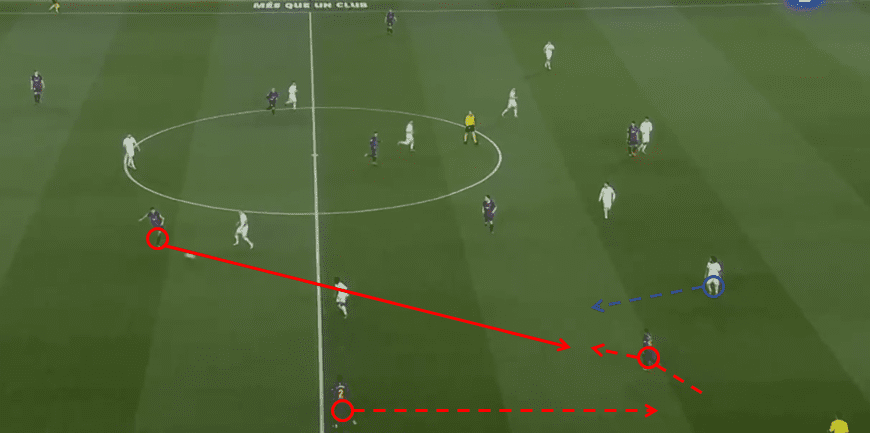
The Brazilian winger would often drop to his half-space, providing some room for the Portuguese to exploit. Semedo would then overlap with pace, and a quick one-two between them would set up a wonderful combination.
Malcom was exceptional in all one-on-one situations. Solari’s choice of Marcelo as the left-back was the only thing that backfired for him as he was beaten time and time again, as can be seen in the example below.
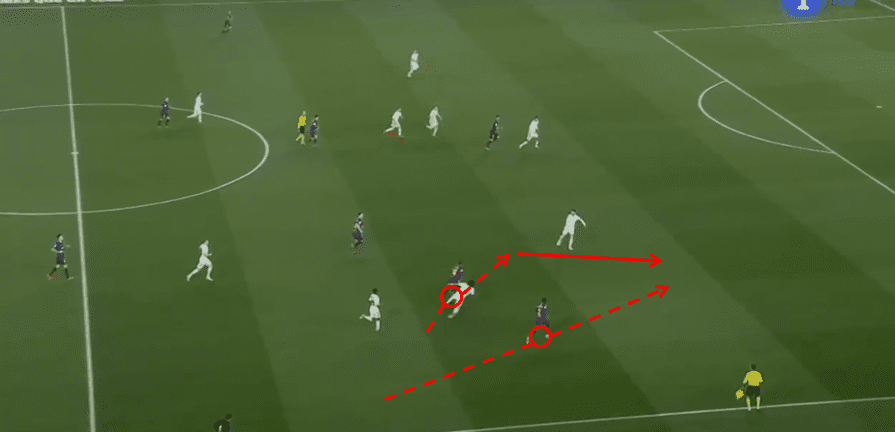
Fortunately for Madrid, Malcom, just like Vinicius on the other side, was lacking the final product, both in finishing actions and providing the final ball.
The return of the king
Lionel Messi started the Clasico on the bench but we all knew it would only be a matter of time before Camp Nou’s favourite graced the pitch. Indeed the Argentine was introduced later in the second half, but it was more of a necessity than the pure will to play.
Barcelona’s attack was mostly blunt and little progress was made to change that. Mostly it was due to the Catalans having only one output going forward, which was surprisingly, as we have already stated, the right wing.
The left wing, which is in general always heavily involved in all attacking sequences, was unusually quiet that evening. The main reason was actually Philippe Coutinho. The Brazilian is still in a slump in form. Unfortunately for him and the club, that slump continued in the Clasico as well.
That was a dire situation for Barcelona. Not only did Coutinho perform badly, but he also blocked Jordi Alba from overlapping as much, which affected the attack tremendously. Coutinho was, therefore, subbed off and on came Leo Messi.
But, as much as it’s rather unusual to say this, Messi was also pretty quiet on the night. He may have created a couple of great chances, and found himself in a couple of promising ones as well, but for the majority of the time it seemed like he was not at his peak. He was running a lot less than usual, and putting a lot less effort into it.
It might be the fact that it is ‘only’ the Copa del Rey, or that Messi was simply not yet fully ready for a game of that rhythm and intensity. Even the greats have days off, so it’s hard to hold it against him all that much.
In his absence, Gerard Pique took it upon himself to see the game out. The Catalan centre-back was a rock in defence with no leaks and almost no mistakes. A similar thing could be said for Keylor Navas on the other side, and they might very well be the reasons the result stands as it is.
Conclusion
For a semi-final El Clasico, it has to be said, this one was a bit underwhelming. For the first 30 minutes it was all Real Madrid. Still, as the game lingered on, the tempo slowed down drastically.
Barcelona had their moments and had the momentum on their side for a particular span of time, but both teams failed to take advantage of the chances they had. Some unlikely heroes rose up to the occasion, which resulted in a fairly decent game after all.
With an away goal, Real do hold a slight advantage even though the first leg ended in a draw. Still, taking into account that both teams traditionally play the Clasicos better in the away stadiums, it is not a stretch to say that this is pretty much still an open tie.
The winner takes it all at the Santiago Bernabeu, and there’s a lot more football in front of us very soon. The rematch is just 20 days away but Blaugrana and Los Blancos will meet three times in a span of less than a month: once again in the Copa del Rey to decide who goes to the final, and then once more in La Liga.
We are just getting warmed up…
________________________________________________________________________
If you love tactical analysis, then you’ll love the digital magazines from totalfootballanalysis.com – a guaranteed 100+ pages of pure tactical analysis covering topics from the Premier League, Serie A, La Liga, Bundesliga and many, many more. Buy your copy of the January issue for just ₤4.99 here, or even better sign up for a ₤50 annual membership (12 monthly issues plus the annual review) right here.

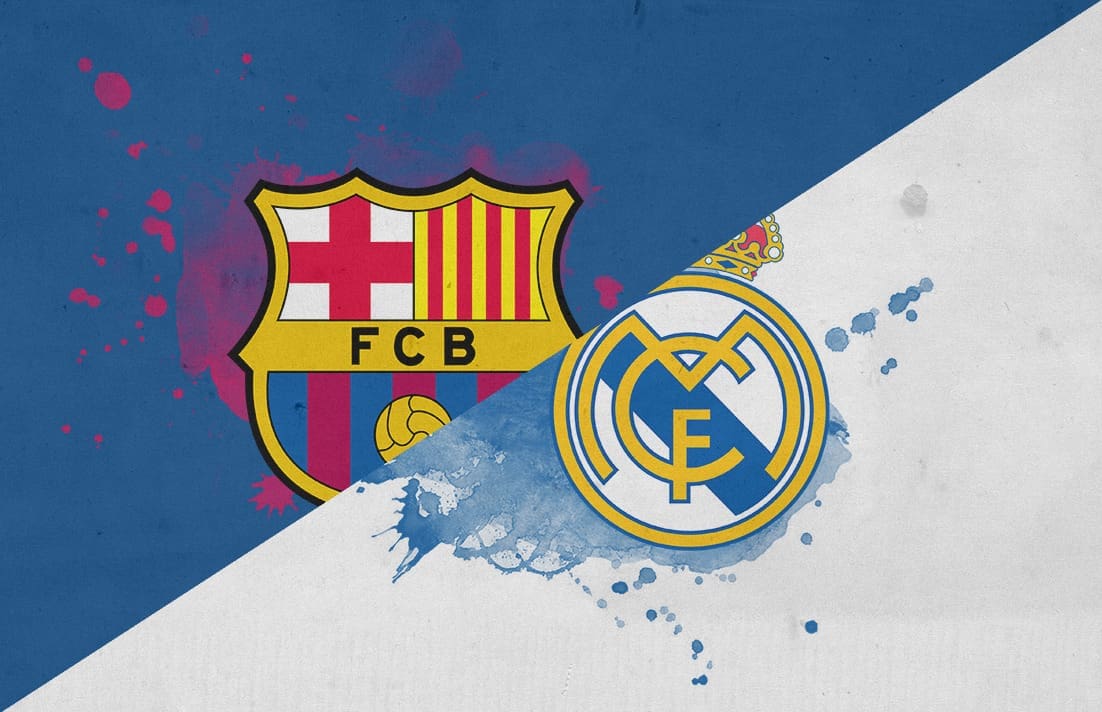




Comments